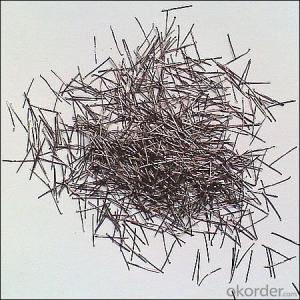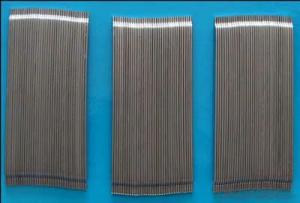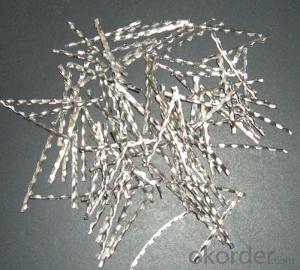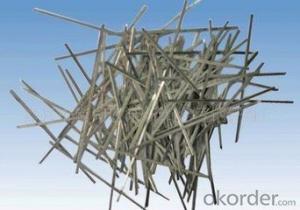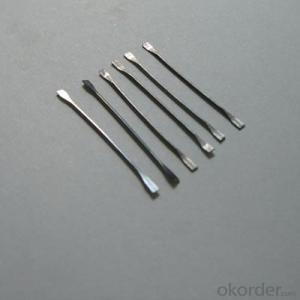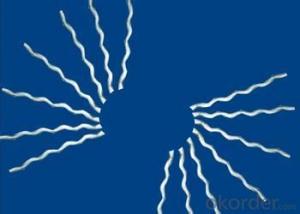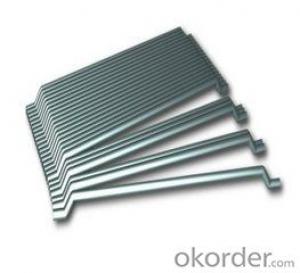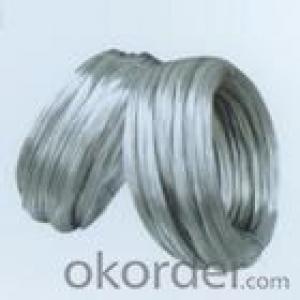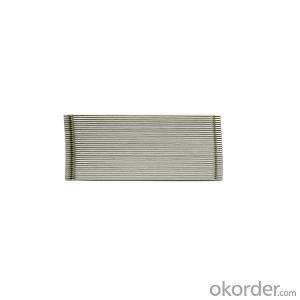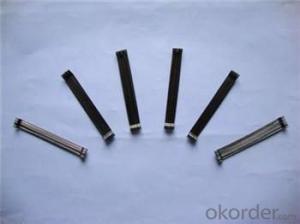Airport Runway Cement Buildings Instead Of Steel Fiber
- Loading Port:
- Tianjin
- Payment Terms:
- TT OR LC
- Min Order Qty:
- 1000 kg
- Supply Capability:
- 250000 kg/month
OKorder Service Pledge
OKorder Financial Service
You Might Also Like
Quick Details
Place of Origin: Shandong, China (Mainland)
Model Number: steel fiber
material: steel wire
application: concrete reinocement
type: end hook steel fiber
Product features
steel fiber for conatruction and concrete reinforcement,widely uesd in concrete to improve its stabality end hooked steel fiber ,with its high tensile strength ,good scattering and good combination with cenment material concrete steel fiber is specifically designed to enhance concrete in its hardened state ,the uniform distribution of steel fibers throughout the concrete greatly improve concrete bonding and tensile strengh ,addtionally it provides eceptional load stability and durability ,as reliable and efficient concrete reinforement materisl ,it is widely used in buildings ,bridges,thin roof engineering ,highy way etc.
Specifications
1.hooked steel fiber
2.CE and ISO9001:2008
3.diameter from 0.5mm to 1.2mm
4.competitive price,high quality and service
Hooked Steel Fiber:
1.Diameter:0.5mm-1.0mm
2.Length: 25mm-60mm
3.Material: low carbon steel wire
4.Feature: excellent tensile,high tenacity,against cracking,impact and fatigue
5.Uses: high way,tunnel,building,airport road serface and so on .
Picture
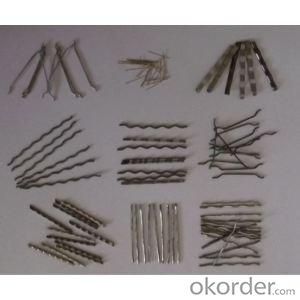
steel fiber concrete reinforced
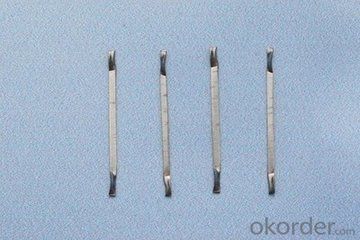
any type steel
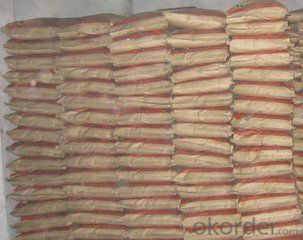
FAQ
we can produce any type steel fiber and of course we can make production according to your requirement
we have specilize in this field for almost 10 years ,with good quality and competitive price
- Q:Can melt extract stainless steel fiber be used in marine structures for shotcrete?
- Indeed, melt extract stainless steel fiber finds its application in marine structures for shotcrete. Renowned for their exceptional resistance against corrosion, stainless steel fibers prove to be a fitting choice for employment in marine settings. Shotcrete, a technique involving the pneumatic application of concrete, can reap the advantages of incorporating stainless steel fibers, as they enhance the concrete's longevity and robustness. By mitigating cracking and bolstering the shotcrete's structural integrity as a whole, these fibers render it a dependable option for marine structures confronted by demanding elements like saltwater and waves.
- Q:Does melt extract stainless steel fiber improve the resistance to chemical attack of concrete?
- Yes, melt extract stainless steel fiber can improve the resistance to chemical attack of concrete.
- Q:Does melt extract stainless steel fiber improve the fatigue resistance of concrete?
- Yes, melt extract stainless steel fiber can improve the fatigue resistance of concrete. The addition of stainless steel fibers enhances the tensile strength and ductility of concrete, thereby reducing crack formation and propagation under cyclic loading. This improves the fatigue resistance of the concrete, making it more durable and capable of withstanding repeated stress cycles without failure.
- Q:How is melt extract stainless steel fiber produced?
- Melt extract stainless steel fiber is produced through a specialized manufacturing process. The first step involves melting high-quality stainless steel alloy in a furnace at extremely high temperatures. The molten steel is then forced through a spinneret, which is a fine nozzle with multiple small holes. As the molten steel is extruded through these holes, it solidifies and forms thin fibers. Once the fibers are formed, they are rapidly cooled and solidified by passing them through a cooling chamber or a quench bath. This process ensures that the fibers maintain their desired shape and strength. After cooling, the fibers are collected and further processed to remove any impurities or contaminants. The collected stainless steel fibers are typically cut into shorter lengths to enhance their usability in various applications. They can be further processed to modify their surface properties, such as by coating them with a protective layer or applying different surface treatments. The melt extract process allows for the production of stainless steel fibers with consistent dimensions and properties. These fibers possess excellent tensile strength, corrosion resistance, and high thermal conductivity, making them suitable for a wide range of applications. They are commonly used in concrete reinforcement, refractories, filtration systems, and as conductive additives in various industries.
- Q:Can melt extract stainless steel fiber be used in tunnel construction?
- Yes, melt extract stainless steel fiber can be used in tunnel construction. It is commonly used as a reinforcement material in concrete to enhance its strength, durability, and resistance to cracking. Stainless steel fibers can effectively control shrinkage cracks and improve the overall performance of the tunnel structure.
- Q:Can melt extract stainless steel fiber be used in roller-compacted concrete (RCC)?
- The utilization of melt extract stainless steel fiber in roller-compacted concrete (RCC) is indeed feasible. RCC, which is compacted by rollers, yields a more compacted and robust end product. By incorporating stainless steel fibers into RCC, its mechanical properties, such as crack resistance and flexural strength, can be significantly improved. Melt extract stainless steel fibers are manufactured through the process of melting stainless steel and subsequently rapidly extracting it into fine fibers. These fibers possess remarkable tensile strength, resistance to corrosion, and the ability to effectively distribute stresses within the concrete matrix. Consequently, they can enhance the performance of RCC by enhancing its resistance to shrinkage, impact, and fatigue. Moreover, melt extract stainless steel fibers can be easily dispersed in the concrete mixture and uniformly distributed throughout RCC during the compaction procedure. This guarantees a strong bond between the fibers and the concrete matrix, resulting in uniform reinforcement and the prevention of crack formation. In conclusion, incorporating melt extract stainless steel fiber in roller-compacted concrete is a suitable approach for enhancing its mechanical properties and overall durability. However, it is crucial to consult concrete experts and conduct thorough testing to determine the appropriate dosage and fiber length for the specific application of RCC.
- Q:What is the effect of melt extract stainless steel fiber on the durability of concrete?
- The use of melt extract stainless steel fiber in concrete significantly improves its durability. The fibers act as reinforcement, enhancing the strength and resistance of the concrete to cracking, shrinkage, and impact. This results in a longer lifespan for the concrete structure, reducing the need for repairs or replacement. Additionally, the stainless steel fibers increase the concrete's resistance to corrosion, making it suitable for various environmental conditions. Overall, the inclusion of melt extract stainless steel fiber positively impacts the durability and performance of concrete.
- Q:What is the diameter range of melt extract stainless steel fiber?
- The diameter range of melt extract stainless steel fibers typically falls between 5 to 50 micrometers.
- Q:Can melt extract stainless steel fiber be used in pre-stressed concrete applications?
- Indeed, in pre-stressed concrete applications, the utilization of melt extract stainless steel fiber is possible. Pre-stressed concrete is a concrete variant that gains strength through the application of internal stresses, achieved by tensioned steel wires or cables. By incorporating stainless steel fibers into pre-stressed concrete, an extra layer of reinforcement is provided, thus enhancing its mechanical properties. Melt extract stainless steel fibers are renowned for their remarkable tensile strength, resistance to corrosion, and durability, rendering them suitable for employment in pre-stressed concrete applications. Consequently, these fibers play a crucial role in augmenting the overall strength, crack resistance, and long-term performance of pre-stressed concrete structures.
- Q:What is the effect of melt extract stainless steel fiber on the early-age cracking of concrete?
- Reducing early-age cracking in concrete can be achieved through the utilization of melt extract stainless steel fiber. There are various factors that contribute to early-age cracking, including temperature fluctuations, shrinkage, and rapid moisture loss. By incorporating stainless steel fibers into the concrete mixture, the overall tensile strength of the material is enhanced, providing reinforcement. This reinforcement plays a crucial role in controlling the formation and propagation of cracks during the initial stages of concrete curing. The exceptional properties of melt extract stainless steel fibers, such as their high tensile strength, resistance to corrosion, and durability, make them an ideal choice for mitigating early-age cracking. These fibers effectively disperse stress throughout the concrete matrix, restricting the initiation and spread of cracks. Furthermore, melt extract stainless steel fibers can also aid in managing plastic shrinkage cracking. During the early stages of concrete curing, rapid loss of moisture can cause the surface to shrink and crack. By incorporating stainless steel fibers, this shrinkage is restrained, thereby reducing the likelihood of early-age cracking. It is worth noting that the precise impact of melt extract stainless steel fiber on early-age cracking may vary depending on factors such as the dosage of fibers, the design of the concrete mix, and environmental conditions. Therefore, comprehensive testing and consultation with experts are essential to determine the optimal dosage and application of fibers for a specific project.
1. Manufacturer Overview |
|
|---|---|
| Location | |
| Year Established | |
| Annual Output Value | |
| Main Markets | |
| Company Certifications | |
2. Manufacturer Certificates |
|
|---|---|
| a) Certification Name | |
| Range | |
| Reference | |
| Validity Period | |
3. Manufacturer Capability |
|
|---|---|
| a)Trade Capacity | |
| Nearest Port | |
| Export Percentage | |
| No.of Employees in Trade Department | |
| Language Spoken: | |
| b)Factory Information | |
| Factory Size: | |
| No. of Production Lines | |
| Contract Manufacturing | |
| Product Price Range | |
Send your message to us
Airport Runway Cement Buildings Instead Of Steel Fiber
- Loading Port:
- Tianjin
- Payment Terms:
- TT OR LC
- Min Order Qty:
- 1000 kg
- Supply Capability:
- 250000 kg/month
OKorder Service Pledge
OKorder Financial Service
Similar products
New products
Hot products
Hot Searches
Related keywords
